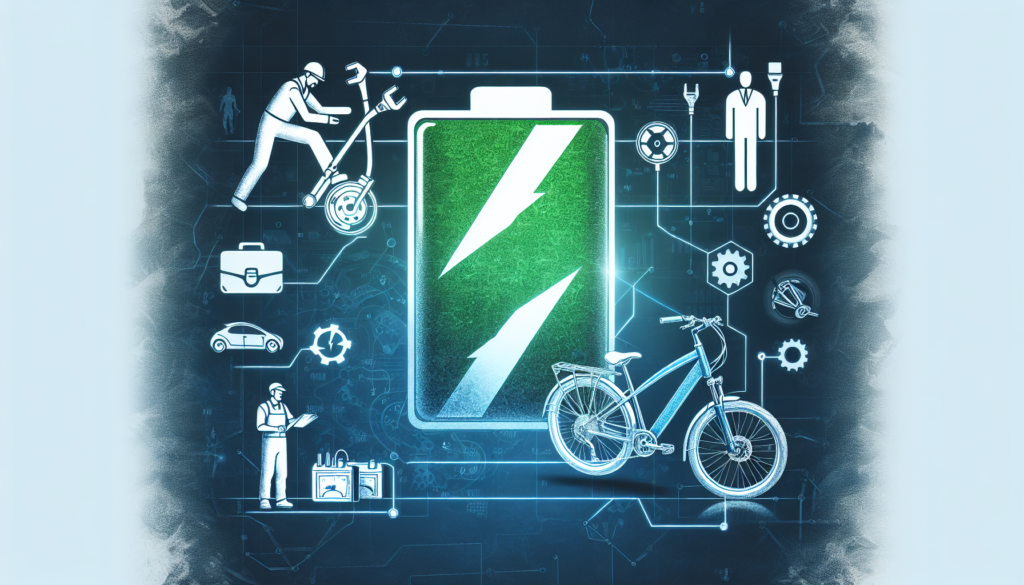Imagine never having to worry about running out of battery power on your electric bike again. With the increasing popularity of electric bikes, many riders are curious about the lifespan of their bike’s battery. Whether you’re a seasoned electric bike enthusiast or considering investing in one, understanding how long an electric bike battery lasts is key to maximizing your riding experience. In this article, we will explore the factors that affect the longevity of electric bike batteries and provide tips on how to extend their lifespan. Get ready to embark on an electrifying journey!
Factors Affecting Electric Bike Battery Life
Are you curious about how long your electric bike battery is going to last? There are several factors that can influence the lifespan of an electric bike battery. In this article, we will explore each of these factors, from the type of battery to manufacturing quality, to help you understand what you can do to maximize the lifespan of your electric bike battery.
Battery Type
The type of battery used in an electric bike can significantly impact its lifespan. Here are some common types of batteries you may come across:
Lithium-ion (Li-ion) Batteries
Li-ion batteries are the most popular choice for electric bikes due to their high energy density, lightweight, and long lifespan. With proper care and maintenance, a Li-ion battery can last anywhere between 2 to 7 years.
Lead Acid Batteries
Lead acid batteries are less common in electric bikes nowadays due to their heavy weight and limited lifespan. These batteries typically last between 1 to 3 years and require regular maintenance.
Nickel Cadmium (Ni-Cd) Batteries
Ni-Cd batteries have a higher self-discharge rate and a memory effect, which can result in reduced battery capacity over time. They are less commonly used in electric bikes today due to their lower energy density and environmental concerns.
Nickel Metal Hydride (NiMH) Batteries
NiMH batteries offer a balance between cost, energy density, and lifespan. They are less prone to memory effect compared to Ni-Cd batteries but are gradually being replaced by Li-ion batteries in the electric bike market.
Battery Capacity
The battery capacity, measured in Ampere-hours (Ah) or Watt-hours (Wh), is another crucial factor affecting battery life.
Ah (Ampere-hour)
A higher Ah rating indicates a larger capacity, meaning the battery can supply more energy. Electric bike batteries typically range from 8Ah to 20Ah. Higher Ah batteries provide a longer range but may have a shorter lifespan compared to lower Ah batteries.
Wh (Watt-hour)
Wh measures the total energy a battery can hold. It is calculated by multiplying the voltage (V) by the Ah rating. A higher Wh rating translates to a longer range but may also impact the overall lifespan of the battery.
Power Assist Level
Electric bikes often come with multiple power assist levels, allowing you to adjust the amount of assistance the motor provides. The power assist level you choose can affect the battery life.
Eco mode
Eco mode provides minimal assistance from the motor, resulting in lower power consumption and extended battery life. This mode is ideal for conserving battery power during long rides.
Normal mode
Normal mode balances assistance and power consumption, offering a good compromise between range and performance.
Power mode
In power mode, the motor provides a significant amount of assistance, resulting in higher power consumption and shorter battery life. This mode is suitable for situations where you need extra assistance, but keep in mind that it may reduce the overall lifespan of the battery.
Turbo mode
Turbo mode offers maximum power assistance, providing a significant boost in speed and acceleration. However, using this mode extensively may drastically reduce the battery life.
Usage Patterns
How you use your electric bike can impact the battery life. Here are some factors to consider:
Distance Traveled
The more miles you cover on your electric bike, the greater the strain on the battery. Long-distance rides will consume more battery power, potentially leading to a shorter battery life.
Frequency of Use
Using your electric bike regularly is generally beneficial for the battery as it helps maintain optimal performance. Short rides or occasional use may result in reduced battery lifespan due to irregular charging and discharging patterns.
Riding Style
Your riding style can also impact battery life. Aggressive acceleration and excessive use of power-assist modes can drain the battery faster. A more efficient riding style, such as maintaining a steady pace and using lower power-assist levels, can help extend battery life.
Payload
The total weight carried by your electric bike, including rider and cargo, affects the battery’s workload. Heavier loads will require the motor to work harder, resulting in increased power consumption and potentially shorter battery life.
Terrain and Elevation
The type of terrain you ride on and the elevation changes you encounter can influence the battery life.
Flat Terrain
Riding on flat terrain puts less strain on the battery, allowing for longer rides and extended battery life.
Hilly Terrain
Hilly terrain requires more power from the motor, leading to increased power consumption and shorter battery life.
Steep Inclines
Climbing steep hills can drastically reduce the battery life as the motor needs to provide additional power to overcome the incline.
Altitude
High-altitude riding can affect battery performance due to reduced air density, resulting in decreased motor efficiency and potentially shorter battery life.
Temperature
Temperature plays a vital role in the overall performance and lifespan of an electric bike battery.
Operating Temperature Range
Electric bike batteries have an optimal operating temperature range. Excessive cold or heat outside this range can affect the battery’s performance and reduce its lifespan.
Extreme Cold
Extremely cold temperatures can cause the battery to lose capacity temporarily. It is advisable to store and charge your electric bike battery in a climate-controlled environment during winter to prevent damage and maximize its lifespan.
Extreme Heat
High temperatures can accelerate battery aging and lead to permanent capacity loss. Avoid leaving your electric bike in direct sunlight or exposing it to extremely hot environments to prevent heat-related damage to the battery.
Charging and Discharging Practices
How you charge and discharge your electric bike battery can impact its lifespan.
Charging Time
Charging your battery for shorter periods and avoiding overcharging can help prolong its overall lifespan. It is recommended to follow the manufacturer’s guidelines for charging time.
Discharging Rate
Draining the battery completely before recharging can lead to capacity loss over time. It is best to avoid fully discharging your electric bike battery and recharge it before it reaches critically low levels.
Partial Charging vs. Full Charging
Partial charging is generally better for the battery’s longevity compared to full charging. Frequent full charging can contribute to faster battery degradation.
Avoiding Overcharging or Over-discharging
To maximize the lifespan of your electric bike battery, it is crucial to avoid both overcharging and over-discharging. Overcharging can cause heat buildup and damage the battery, while over-discharging can lead to increased stress on the battery cells.

Battery Age
The age of the battery itself can affect its performance and lifespan.
Cycle Life
Electric bike batteries have a finite number of charge cycles. Each time you charge and discharge the battery, it counts as one cycle. Most electric bike batteries have a cycle life ranging from 500 to 1000 cycles, after which the battery’s capacity may start to decline.
Battery Degradation
Over time, battery degradation occurs naturally, resulting in reduced capacity and performance. Factors such as temperature, charging practices, and usage patterns can accelerate this process.
Battery Replacement
If your battery is no longer holding a sufficient charge or if the capacity has significantly diminished, it may be time to replace the battery. Replacing the battery can restore the electric bike’s performance and extend its overall lifespan.
Maintenance and Care
Proper maintenance and care can go a long way in maximizing the lifespan of your electric bike battery.
Brand Reputation
Choosing a reputable brand known for producing high-quality electric bike batteries can ensure you receive a battery with good overall performance and longevity.
Quality Control
Manufacturers with stringent quality control processes are more likely to produce electric bike batteries that are reliable and have a longer lifespan. Researching and purchasing from manufacturers with robust quality control measures can help you obtain a battery of higher quality.
Warranty
Purchasing an electric bike with a good warranty can provide peace of mind knowing that the manufacturer stands behind the quality and lifespan of the battery. Familiarize yourself with the warranty terms and conditions to understand what is covered and for how long.
In conclusion, the lifespan of your electric bike battery is influenced by multiple factors, including battery type, capacity, power assist level, usage patterns, terrain, temperature, charging and discharging practices, battery age, maintenance, and manufacturing quality. By understanding these factors and taking appropriate measures, you can maximize the lifespan of your electric bike battery, ensuring you can enjoy your rides for years to come.


